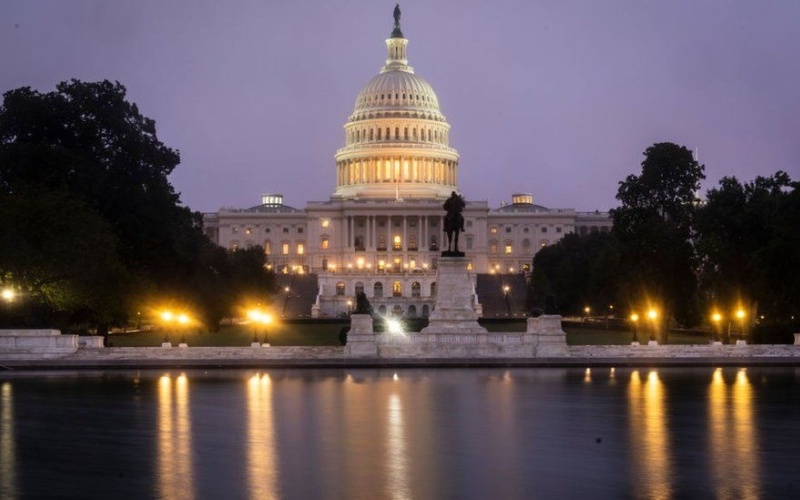Co-published with the Irish Examiner:
EA on Monocle Radio and GB News: US Election 2024 — The Sane v. The Weird and Dangerous
A 4-Point Beginner’s Guide to A Critical US Election
In these US elections, perhaps the most important since 1865, a large part of the story is being overlooked.
There is a daily saturation of headlines about the Presidential races. But the contests for control of Congress, which may be just as significant for the future of the US system, are receiving scant attention from even the most prominent American outlets.
What can be expected on November 5 in the votes for the Senate and the House of Representatives?
The Importance of the Contest
In the US system of checks and balances, the Congressional outcome always carries weight alongside the battle for the White House.
If one party controls the Presidency and both houses of Congress, it is more likely to pass its legislation. But if the Presidency is faced with an opposition party in charge of one or both chambers, then the White House’s initiatives may be hindered or blocked in a “gridlock” of the Government. And even a slim majority for a ruling party in both the Senate and House might require the President to move carefully to hold his or her coalition together.
But these are far from normal times, especially if Trump wins in November. He and his allies have already planned, through statements and lengthy manifestoes like Project 2025, to politicize all Government agencies. Doing so, they hope to steamroll a legislature if it dares challenge them.
Meanwhile there is likely to be a battle, perhaps existential, between Trumpists and traditional Republicans for dominance of the party. That fight is likely to begin with the succession of the retired Senate Republican Mitch McConnell, who both protected and tried to contain Trump during his four years in the White House.
The combination of a loud Trumpist faction in the House, a Trumpist leader in the Senate, and a majority in both chambers — as well as a Supreme Court packed with conservative justices in recent years — would bolster Trump as he tries to dismantle the elements in the system that limited his chaotic first term.
A Divided Congress
Both chambers are on a knife-edge. In the Senate, the Democrats have a 51-49 majority, thanks to three independents who caucus with them. In the House, the Republicans have the 220-212 advantage, with three vacant seats.
In a toss-up election, the safest bet at the moment is that the Republicans will take control of the Senate 51-49. That is not because of a GOP surge — in fact, Democratic candidates are outperforming their Presidential candidate Kamala Harris.
Of the 34 seats contested this year, Republicans only have to defend 11. All of them are safe, bar an unexpected surge for the Democrat Colin Allred in Texas against Sen. Ted Cruz. In contrast, of the 23 held by Democrats, six are too close to call, one is leaning to the Republicans, and one is a near-lock for the GOP.
The Republicans are heavily favored to win the West Virginia seat of the departing Joe Manchin. In Montana, a state which voted for Trump by 16% in 2020, incumbent Sen. John Tester is trailing multi-millionaire businessman Tim Sheehy.
The Democrats are ahead in other six races: Pennsylvania, Ohio, Michigan, Wisconsin, Arizona, and Nevada. However, a sweep of those will not prevent a narrow Republican majority.
The prospects in the House are far different. With all 435 seats contested, the Republican’s starting-point advantage disappears.
There are 26 toss-up races. The Democrats have the advantage in 10, the Republicans in 14, and two are even.
If those results held on Election Day, the GOP would have a 221-212 majority with two seats in the balance. But it would only take a three-seat swing in the narrow margins for the Democrats to gain control.
A Functioning Legislature?
Donald Trump is making no secret of his authoritarian impulses. Last weekend, in an interview with Fox TV, he said the US military could be used against the “enemy within”. He has spoken of “acting like a dictator” on his first day in office. He continues to deny the outcome in the 2020 election. He is threatening retribution against political opponents and judges, pledging deportations of millions of immigrants and asylum-seekers, declaring a purge of civil servants, and labelling some Americans “vermin”.
In those circumstances, split control of the Senate and House and the much-derided “gridlock” of recent years becomes the preferable alternative. It could check not only Trump but his devotees who have sought to disrupt and even cripple a functioning legislature.
Needing to win the support of both chambers, Trump might have to negotiate and even compromise or face the defeat of his plans. If Democrats hold the committee chairs in the House, they would have leverage to hold the Administration accountable. Given Trump’s unconstitutional and destructive record and behavior, yet another impeachment would be possible.
Abraham Lincoln famously said of the American Civil War that “a house divided against itself cannot stand”. It is a marker of the stakes for US society and its damaged state in 2024 that a divided Congress between the Senate and House could ensure the US system continues to stand in a Trump 2.0 era.


Trackbacks/Pingbacks